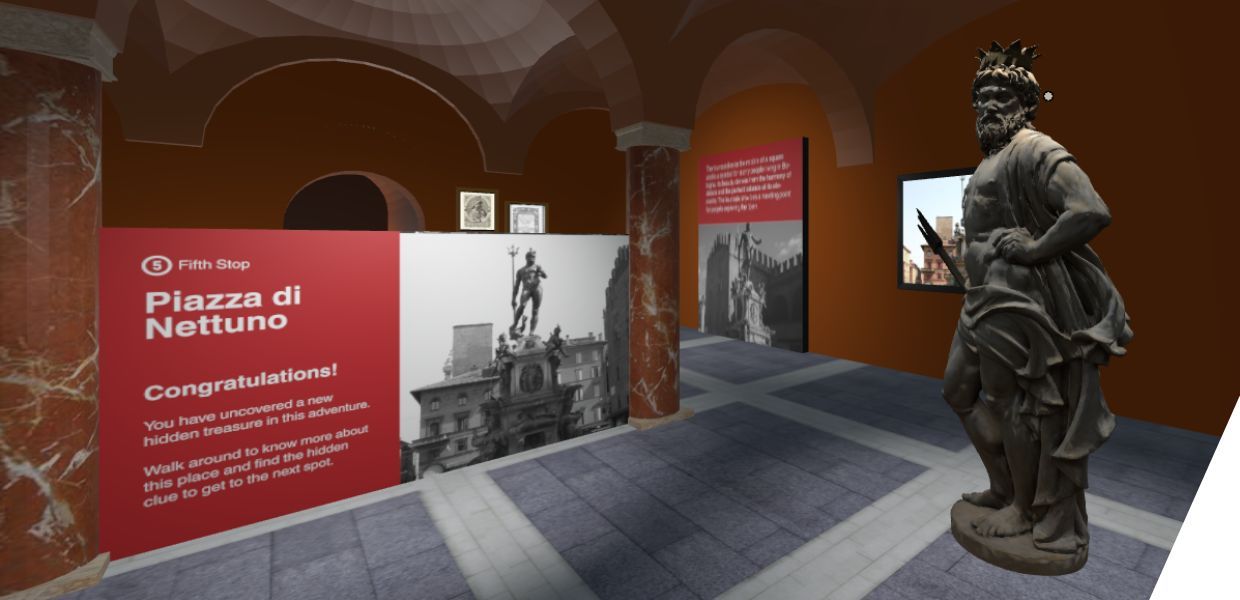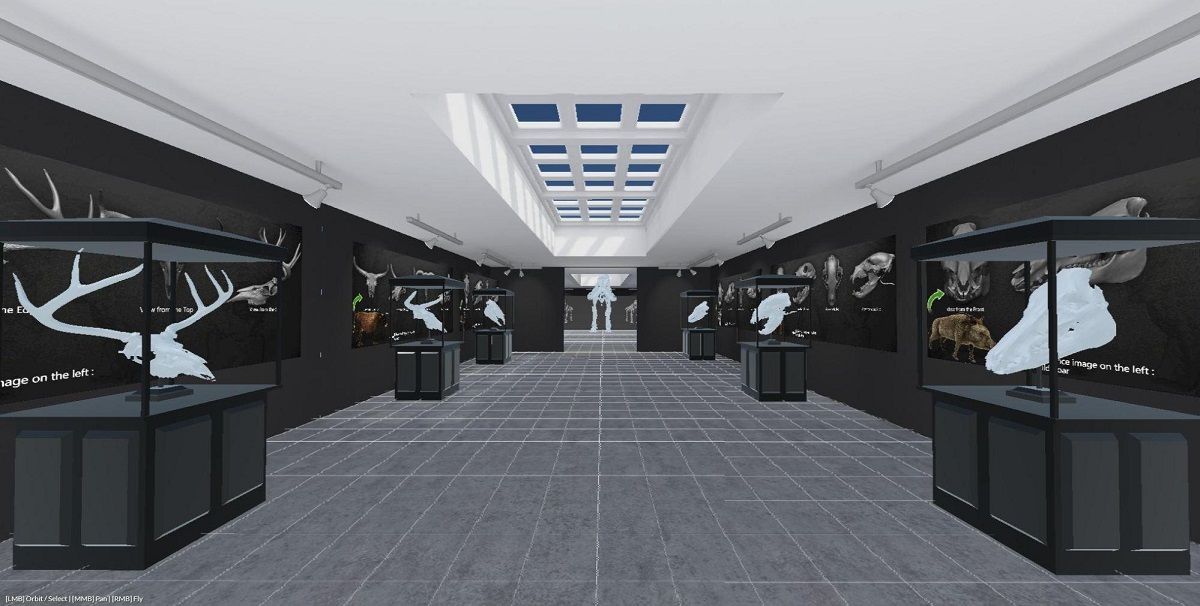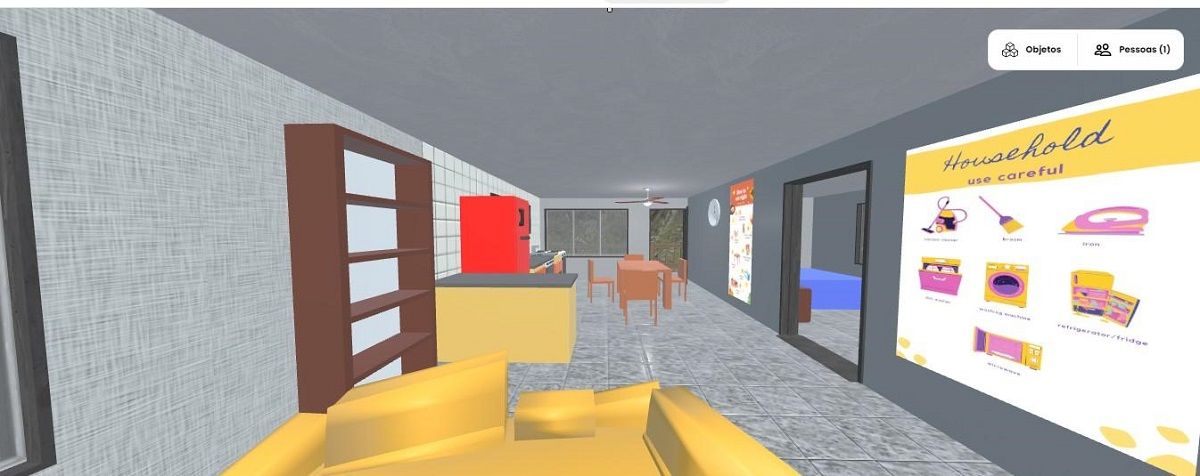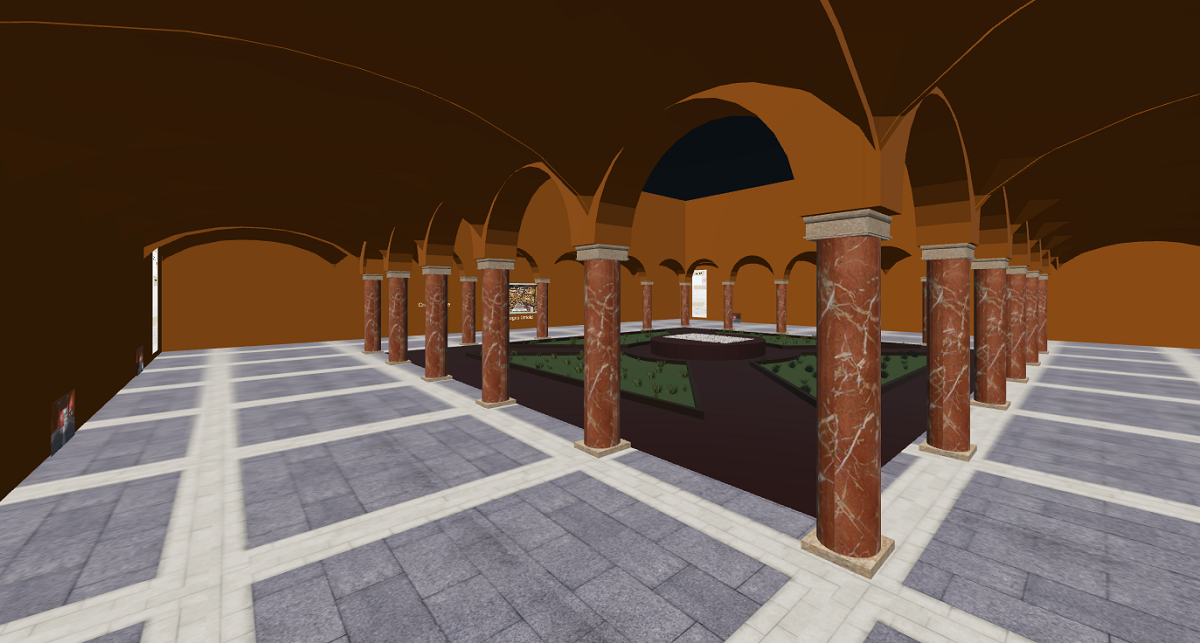Immersive technologies like virtual reality (VR) and augmented reality reality (AR) create distinct experiences by merging the physical world with the digital. They offer the opportunity to engage audiences with cultural heritage in new ways, and offer exciting possibilities for education.
These possibilities have been fully demonstrated by Built with Bits, a mentoring programme and educational challenge for students and educators, organised by the Europeana Initiative. The second edition, run by partners Macedonia Studio, took part in the second half of 2022. It trained 262 students and 19 educators and cultural heritage professionals to use Mozilla Hubs (a virtual world platform) to develop virtual spaces which used cultural heritage resources to offer a creative solution for a local issue. In doing so, the programme fostered collaborations between schools, universities, local museums and libraries, digital artists and UX designers, researchers, historians, architects, local authorities and tourism centres.
The projects developed for the programme are varied and inspiring and provide rich answers to the question: why use immersive technologies in education?
1. Immersive technologies allow you to bring digitised items together in one space to engage students (and communities) in their cultural heritage.
This is what Ioannis E. Tsioptsias, a primary school teacher in Ptolemaida, Greece, aimed for with his institution’s Virtual Museum of Natural History project, which created the first immersive cultural experience of his city. Together with nine students in primary education, Ioannis made 2D and 3D digitisations of exhibits from the local city museum to create a digital museum on Mozilla Hubs. The project was awarded the Best Digitisation project prize.
Ioannis says, ‘The Virtual Museum of Natural History envisions a museum open to the local community. It is a fantastic digital version of my city's museum. As a teacher interested in creating bonds between the students, parents and local community, I proposed it because it created an excuse to involve all the students of my school in a united proposal to ask the local municipality to repair the actual museum. In this way, we spread the message of cohesion in the community’.





